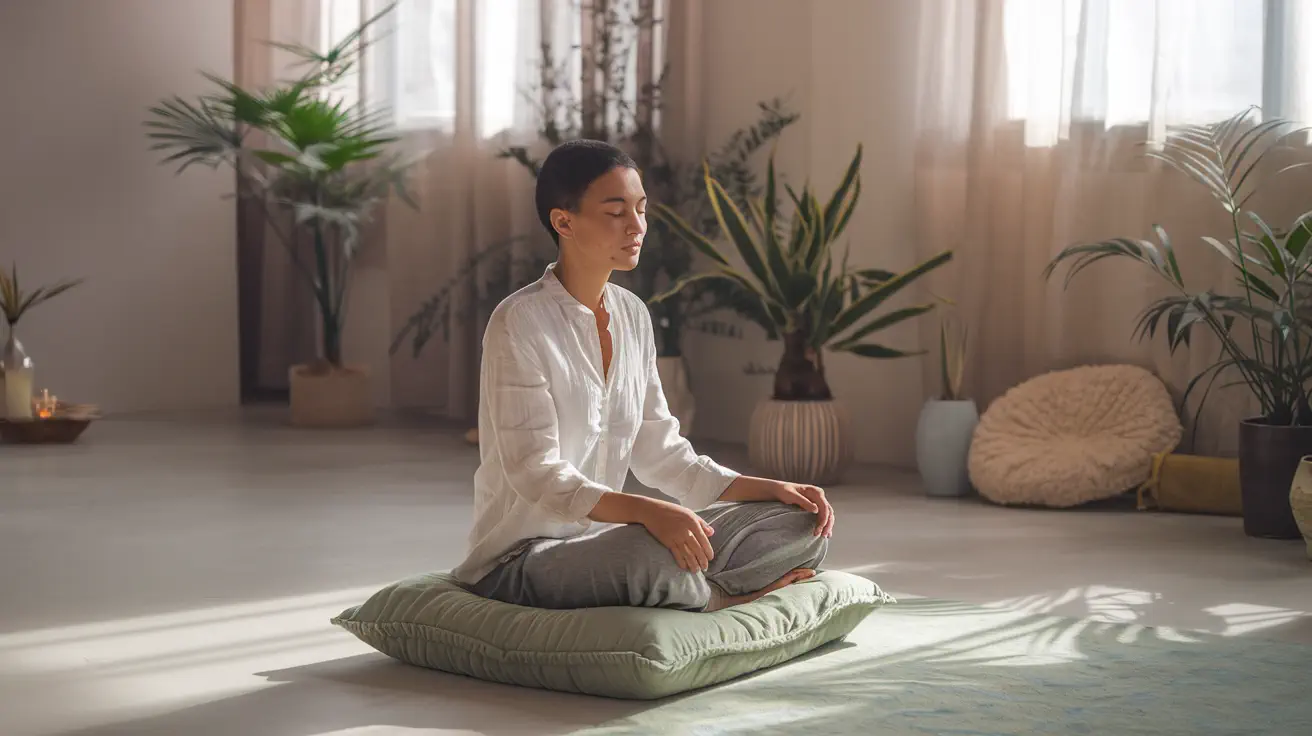
In today’s fast-paced world, stress and anxiety have become a common challenge for many. Whether from work pressure, personal issues, or the constant buzz of daily life, it can feel overwhelming. But there’s a simple and powerful solution to help manage these feelings: mindfulness meditation.
Mindfulness meditation is a technique that focuses on being present in the moment, observing your thoughts without judgment, and cultivating a sense of calm and awareness. Research shows that practicing mindfulness can significantly reduce stress and anxiety, improve emotional regulation, and enhance overall mental well-being.
In this article, we’ll guide you through effective mindfulness meditation techniques to help you achieve peace of mind and reduce stress and anxiety.
What is Mindfulness Meditation?
Mindfulness meditation is the practice of bringing your attention to the present moment, focusing on your breath, bodily sensations, thoughts, and emotions without judgment. The goal is to observe your experiences without reacting to them, which helps you gain perspective, calm your mind, and reduce the intensity of stress and anxiety.
Unlike traditional meditation practices that may require visualization or concentration, mindfulness encourages acceptance and awareness of the present moment, making it accessible to beginners and experienced practitioners alike.
Benefits of Mindfulness Meditation for Stress and Anxiety
Before diving into the techniques, it’s important to understand how mindfulness meditation can help. Here are some key benefits:
1. Reduces the Physical Symptoms of Stress
Mindfulness meditation has been shown to lower blood pressure, reduce heart rate, and lower cortisol (the stress hormone) levels, helping you relax physically and emotionally.
2. Enhances Emotional Regulation
By observing your thoughts without judgment, you can better manage your emotional reactions, reducing feelings of anxiety and frustration.
3. Improves Focus and Clarity
Regular mindfulness practice improves concentration and clarity, which helps you stay focused in stressful situations rather than becoming overwhelmed.
4. Boosts Resilience
Practicing mindfulness meditation regularly helps build emotional resilience, so you’re better equipped to handle life’s challenges.
Top Mindfulness Meditation Techniques to Reduce Stress and Anxiety
Now that we know how mindfulness meditation can help, let’s explore some powerful techniques you can use to reduce stress and anxiety. These techniques can be practiced anywhere, anytime, and are great for beginners.
1. Focused Breathing (Breath Awareness)
How to Practice:
- Sit or lie down in a comfortable position.
- Close your eyes and bring your attention to your breath.
- Breathe in slowly through your nose, allowing your abdomen to rise.
- Exhale gently through your mouth, noticing the sensation of the breath leaving your body.
- If your mind wanders, gently bring your focus back to your breath.
Why It Works: Focused breathing helps regulate your nervous system, encouraging relaxation and reducing the physical symptoms of anxiety.
Duration: 5-10 minutes
2. Body Scan Meditation
How to Practice:
- Find a quiet space and lie down with your legs uncrossed.
- Close your eyes and take a few deep breaths to relax.
- Begin by bringing your awareness to your toes, noticing any sensations or tension.
- Gradually move your attention up your body (feet, legs, abdomen, chest, arms, neck, and head), scanning each area for tension or discomfort.
- Breathe into any areas of tension, allowing them to relax and release.
Why It Works: The body scan helps you become more aware of physical tension and promotes deep relaxation. It also helps you connect with your body, which can reduce anxiety and stress.
Duration: 10-20 minutes
3. Loving-Kindness Meditation (Metta Meditation)
How to Practice:
- Sit comfortably and close your eyes.
- Focus on your breath to center yourself.
- Bring to mind someone you care about and silently repeat phrases such as, “May you be happy, may you be healthy, may you be safe.”
- Gradually expand your loving-kindness to others—friends, strangers, and even those you may have conflicts with.
- Conclude by offering loving-kindness to yourself.
Why It Works: Loving-kindness meditation fosters compassion and positivity, which can help reduce negative thinking patterns often associated with anxiety. It cultivates an attitude of kindness toward yourself and others.
Duration: 10-15 minutes
4. Mindful Walking Meditation
How to Practice:
- Find a quiet space, ideally in nature or a peaceful setting.
- Walk slowly and deliberately, paying attention to the sensation of your feet touching the ground.
- Focus on each step—lifting, moving, and placing your foot—and notice the rhythm of your movement.
- Bring your attention to the environment around you, observing sounds, sights, and smells without judgment.
Why It Works: Mindful walking helps ground you in the present moment and reduces anxiety by bringing your attention to your body and surroundings. It’s a great option if you find sitting still challenging.
Duration: 10-20 minutes
5. Guided Meditation
How to Practice:
- Find a comfortable position, either seated or lying down.
- Listen to a recorded guided meditation or follow along with an app.
- Focus on the voice guiding you through the meditation, which may include visualization, breathing exercises, or body scans.
- Allow yourself to be fully immersed in the experience.
Why It Works: Guided meditation can be especially helpful for beginners, as it provides structure and guidance, making it easier to stay focused and relaxed.
Duration: 10-20 minutes
Final Tips for Successful Mindfulness Meditation
✔ Consistency is Key: Practice mindfulness daily, even if it’s just for 5-10 minutes.
✔ Be Patient with Yourself: It’s normal for your mind to wander. Simply return to the present moment without judgment.
✔ Create a Calm Environment: Choose a quiet, comfortable place where you won’t be disturbed during your practice.
✔ Combine Techniques: Feel free to combine different meditation techniques based on your needs and preferences.
